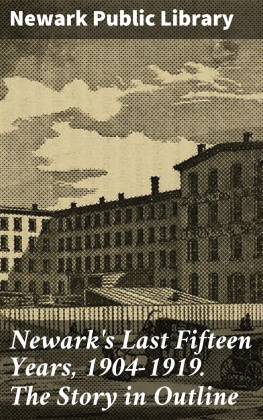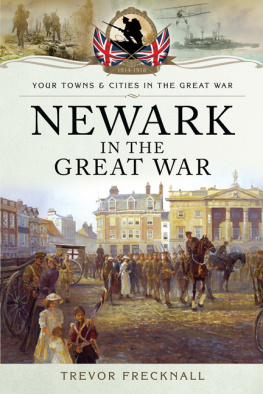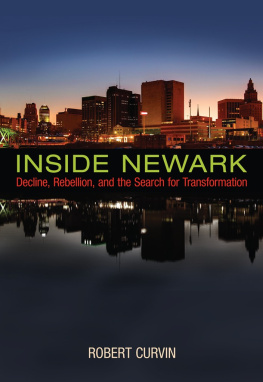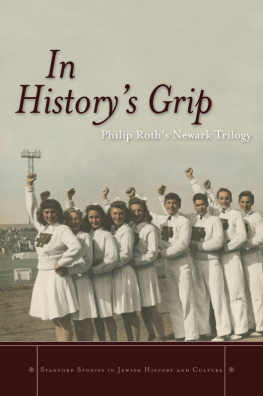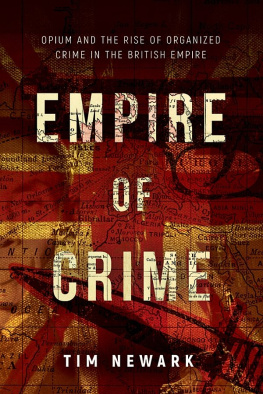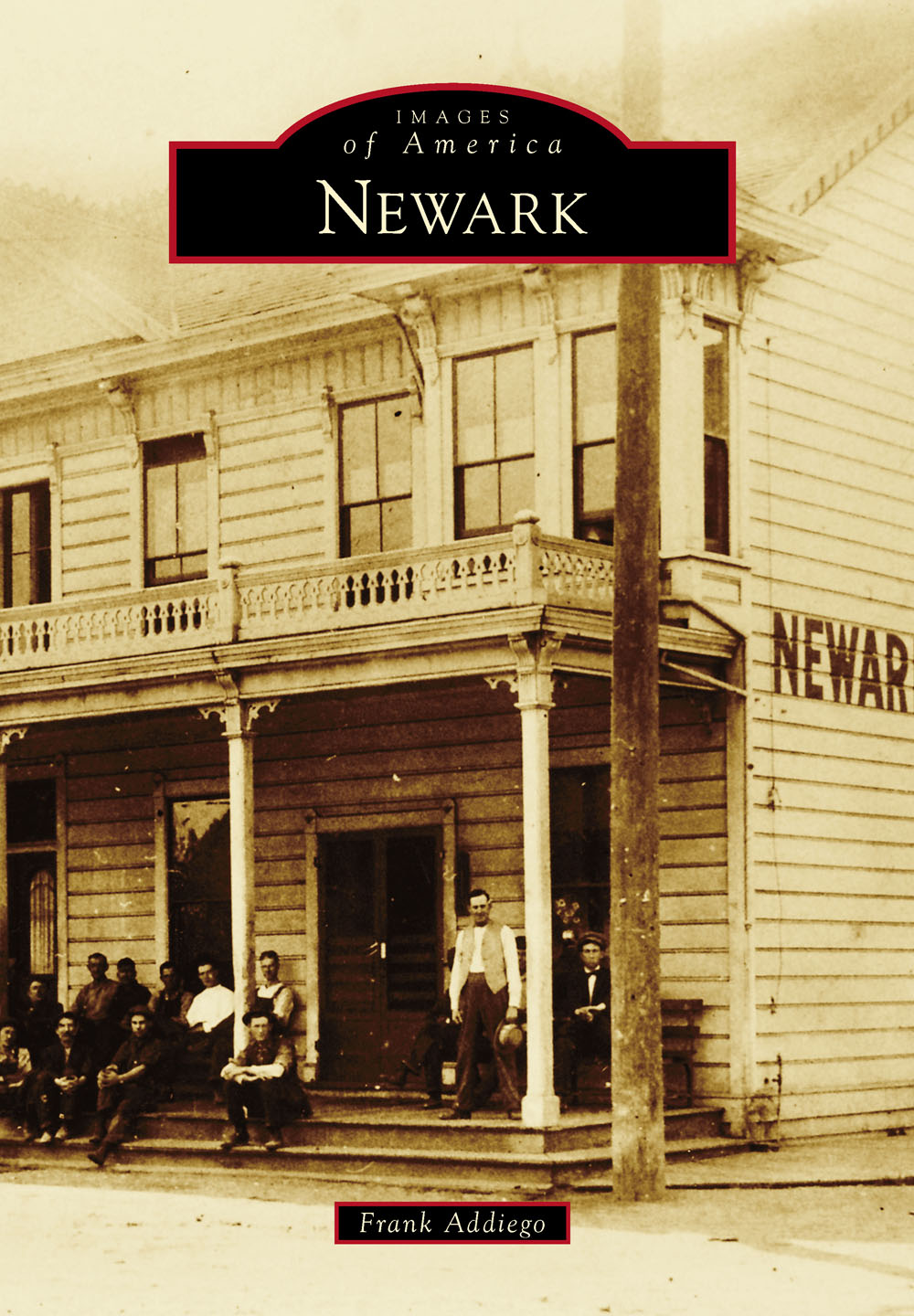
IMAGES
of America
NEWARK
ON THE COVER: In the preincorporation era, the Newark Hotel was one of many businesses allowing travelers to stay comfortably within the largely industrial city. Newark has seen a great deal of progress in the years since. (Courtesy of the Museum of Local History.)
IMAGES
of America
NEWARK
Frank Addiego

Copyright 2015 by Frank Addiego
ISBN 978-1-4671-3336-4
Ebook ISBN 9781439652664
Published by Arcadia Publishing
Charleston, South Carolina
Library of Congress Control Number: 2015941918
For all general information, please contact Arcadia Publishing:
Telephone 843-853-2070
Fax 843-853-0044
E-mail
For customer service and orders:
Toll-Free 1-888-313-2665
Visit us on the Internet at www.arcadiapublishing.com
CONTENTS
ACKNOWLEDGMENTS
A book like this cannot be put together without the efforts of family, friends, and other members of the local community. I can never thank my parents, Frank and Maureen, enough for their support in putting this project together. I would also like to thank Mayor Alan L. Nagy and the rest of the staff of the City of Newark for pictures and insight, particularly Misa Leal Sr., administrative analyst of the Newark Police Department, and Liz Warren, executive assistant to the superintendent of the Newark Unified School District.
Perhaps no other source deserves as much credit as Patricia Schaffarczyk at the Museum of Local History in Fremont. Without the help of this fine institution, I dont think this book would have been possible.
I would also like to acknowledge the help of local citizens such as Gene Daniels, Wayne Carlson, and Ed Leal for contributing photographs they have taken over the years. I also owe a debt of gratitude to citizens such as Larry OJensen, Sandra McCullough Cadinha, Christine Lacey, Cathy Cosmos, Paul Manley, Katie Brake-Janssen, Mike Warren, Bill Fagan, Cheri Steffen-Villarreal, Dennis Leonesio, and everyone else who contributed insight to this journey through Newarks history.
I must give a special thank-you to the late Clark Redeker, Newarks third mayor and one of the citys original council members. It was after speaking with him that I felt this project might have momentum, and his passing soon after was a sad moment.
Finally, no account of Newark could be complete without acknowledging the works of Bruce MacGregor, who has done more to document the citys past than any other citizen. His books Newark: a City at Fifty and The Centennial History of Newark remain invaluable guides to the citys history and legacy.
Unless indicated otherwise, photographs are from the authors collection.
INTRODUCTION
Newark, California, surrounds an area of wetlands just off of San Francisco Bay. Its earliest inhabitants were members of the Ohlone tribe, and like much of the surrounding area, it was built in the shadow of a great mission after Spanish exploration. It saw its first signs of industrialization in the middle of the 19th century. Railroads, factories, and hotels dotted its landscape by the early 1900s, and as time wore on, more and more people moved to the small hamlet toward the southern end of Alameda County. Times were changing, and the unincorporated village was changing with the times.
These changes set the stage for the city of today, which, while nestled within the barriers of its larger neighbor, is an all-American small town on the forefront of technology and steeped in the timeless traditions that have made American industry such a force. Newark has become a sort of Anytown, USA, in the middle of the Bay Area.
And yet, it all could have been lost in those pivotal days of the early 1950s. As the nation became defined more and more by suburbs, the Washington Township of southern Alameda County was well on its way to becoming one large city. That city became Fremont, comprised of the Centerville, Irvington, Warm Springs, Niles, Mission San Jos, and Warm Springs districts. The plan also called for Newark to become part of the city along with Alvarado and Decoto; but Clark RedekerNewarks representative on the county planning commissiondid not want to see Newark become, as he put it years later, a ghetto, fit for nothing but factories and low-income housing.
On September 22, Newark officially became its own city, and the original city council consisted of Redeker, George M. Silliman, Leonard Lucio, Wesley Sears, and Louis Milani, each serving as mayor on a rotating business, beginning with Silliman. The term of each mayoralways an elected member of the city councilwould be only one year until 1972, when Newark elected Jim Balentine, who remained in office until 1978 and the election of Dave Smith.
During its entire preincorporation history, Newarks population never exceeded 100. Today, it stands in excess of 43,000, far short of that of Fremont, but four times as large as Emeryville, which is nestled in between Berkeley and Oakland and known for being a mainly commercial/industrial city. Clark Redeker insisted he did not want Newark to be like Emeryville because, he said, who lives there?
As with the rest of the nation, sweeping changes hit the young city in the 1960s. A brand-new city hall cropped up in 1966 along with a library, and more and more schools adorned the landscape. These hallmarks of the citys infrastructure stand today as a monument to everything Newark has done in not only becoming a city independent of Fremont but in truly carving out its own identity.
In 1978, Newark elected Dave Smith as mayor, a position he retained well into the 21st century. Smith was a boisterous man who suffered no fools and sometimes butted heads with local activists. Great things happened during his tenure; the city experienced a tremendous period of growth, with industry and infrastructure growing at an incredible rate.
While Fremont and Union City each surpassed Newarks population by fareach having been comprised of multiple villages while Newark was only onethe spirit of Newark nevertheless kept it commercially competitive with the two bigger cities into the 21st century.
One of Newarks signature triumphs was the victory in a bidding war with Fremont in the late 1970s for a new indoor shopping center called NewPark Mall. NewPark Mall opened its doors in 1980 and has been home to many of the nations top retail chains as well as smaller businesses. NewParks success made way for other nearby stores such as Toys R Us, T.J. Maxx, and Circuit City. Syufy Enterprises (later Century Theaters) opened two theaters on either side of the Fremont/Newark border on Mowery called Cinedome East and West, respectively. The two Cinedome theaters each showed first-run movies for over two decades.
First elected to the city council only two years after Smith became mayor, Alan L. Nagy is Newarks current mayor. Nagys help was instrumental in compiling many of the photographs in this book along with providing perspective and insight.
Meanwhile, industry has continued to grow as a number of factories, manufacturers, automobile shops, and other forms of industry set up shop and thrived in Newark, in the heart of the city. Yet, as business boomed in Silicon Valley, a new area of townthe Pacific Research Centerbecame home to campuses of several computer and software concerns over the years, such as Sun Microsystems and Logitech.
The early 21st century saw great spurts of growth from both Union City and Fremont, thanks in large part to their shopping developments known respectively as Union Landing and Pacific Commons. The former was created in the ashes of Union Citys famed drive-in theater, with a state-of-the-art 25-screen multiplex and a plethora of big-box retail. The latter was built with a similar ethic in mind, and by the time it developed its own 16-screen multiplex, it had already begun siphoning off some of Newarks commerce, notably Circuit City and Toys R Us.
Next page

